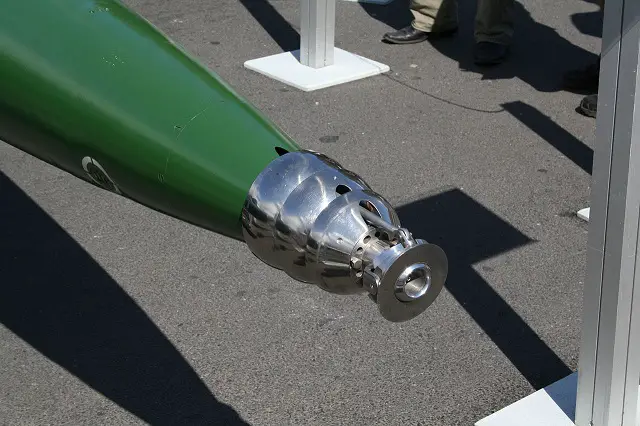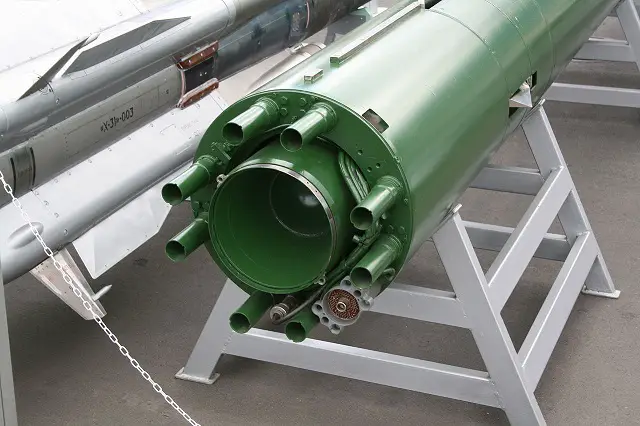Breaking news
Russia developing Khishchnik high-speed torpedo to replace VA-111 Shkval supercavitating torpedo.
| 2017
|
|
|||
 Shkval nose cone Shkval nose cone |
|||
|
|
|||
|
The first prototype was made as soon as 1964. The same year, it launched its tests at Lake Issyk-Kul followed by tests in the Black Sea near the city of Feodosiya. The tests failed. The designers developed one model after another that kept on failing to meet the stringent requirements specification. It is the sixth prototype that passed the tests and was cleared for full-rate production. The torpedo entered the Soviet Navy’s inventory in 1977.
Its high speed resulted from cavitation. Research into this field was started by a TsAGI affiliate in the Soviet Union in the late ‘40s. In the late ‘50s, the scientists came up with a harmonious theory of cavitation movement and issued recommendations for applying its principles to high-speed underwater vehicle development. Cavitation boils down to an object (a torpedo in this case) moving inside an air bubble, overcoming the drag caused by the air, rather than by water. A combined-cycle gas turbine unit in the nose section creates the air bubble enveloping the torpedo. The weapon is propelled by a jet from its solid-propellant rocket motor, rather than by a screw or a waterjet. The Shkval’s power plant is two-stage. First, the solid-propellant motor accelerates the torpedo to the cavitation speed. Then, the sustainer - an underwater ramjet - kicks in. |
|||
|
|
|||
 Shkval rear, showing the guidance fins and the electronics connector Shkval rear, showing the guidance fins and the electronics connector |
|||
|
|
|||
|
The development of the underwater ramjet proved to be as difficult as that of the cavitation generator. It is radically different to the ones used in planes and rockets. It uses seawater as actuating medium and oxidizer, while hydroreactive metals are its fuel.
The speed requirement was met, but the range proved to be a mere 13 km. The torpedo’s launch depth was 30 m, and the weapon dashed to its target at 6 m below the surface. Initially, its warhead was nuclear and had a yield of 150 kilotons. The torpedo weighed 2,700 kg and measured 8,200 mm long. While having a huge speed, the torpedo lacked a seeker. There were two reasons for that. First, maneuvering worth mentioning is impossible at such a speed, because the air bubble will disintegrate. Second, the torpedo is very noisy and it vibrates, which will make the seeker hear nothing but the motor. Naturally, the heading of the enemy ship subject to sinking as well as its speed and other factors is taken into consideration prior to the Shkval’s launch, i.e. a lead is allowed for, but it is short, because the Shkval covers 13 km inside 130 s - a bit more than 2 min. The torpedo’s baseline model carried a 150-kt nuclear warhead. It was replaced with a high-explosive one weighing about 250 kg, when the time came to slash the nuclear stockpiles. However, the launch of the torpedo exposed the submarine, for the Shkval’s wake gave its position away lock, stock and barrel. The torpedo’s short range was fraught with another problem: to attack an aircraft carrier or other major combatant, the submarine had to enter its antisubmarine coverage area, which reduced its own chances for survival. In other words, although the designers produced high technical characteristics, the weapon proved to be of little use in practical terms. The Shkval was removed from the inventory. Designers in two more countries echoed the ideas embodied in the Shkval. In 2005, Germany announced the development of the Barracuda supercavitating torpedo with a speed of 400 km/h, and, two years ago, the Iranian chief of naval operations mentioned a torpedo travelling at 320 km/h. However, these are not weapons ready for combat, rather prototypes undergoing the trials. The Khishchnik is not a version of the Shkval. Serious money has been set aside for its development. The two contractors alone - Elektropribor and the SEPO-ZEM plant in Saratov - co-pursuing the Khishchnik-M program have received more than 1.5 billion rubles ($25 million). Therefore, it is possible that the torpedo will have a seeker and be able to maneuver and its range and stealth will increase, expert Vladimir Tuchkov writes in the article on the Svobodnaya Pressa news website. © Copyright 2016 TASS. All rights reserved. This material may not be published, broadcast, rewritten or redistributed. |
|||



























